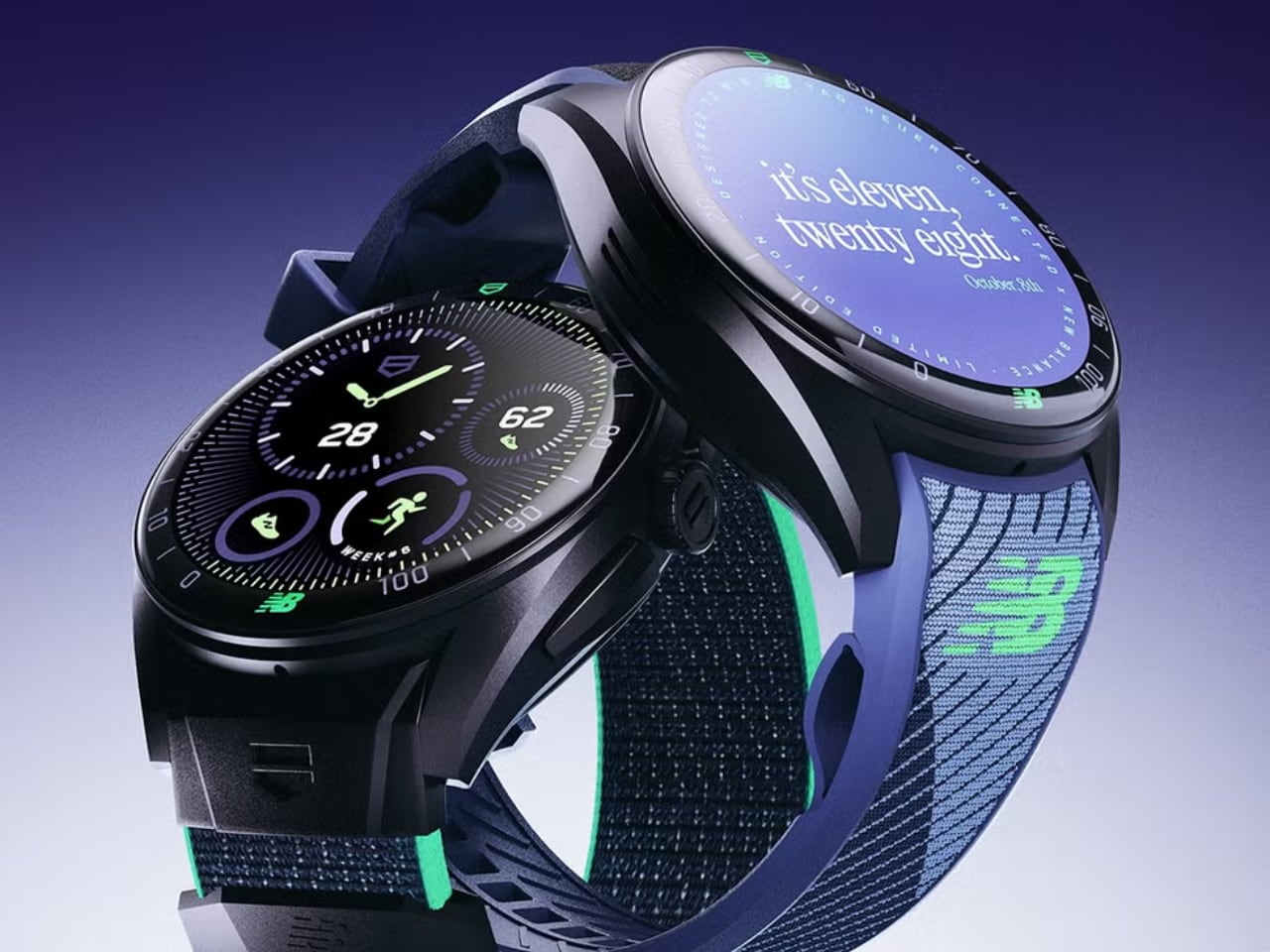
The TAG Heuer Connected Calibre E5 marks a decade of refinement in luxury smartwatch design. Having reviewed everything from the Huawei Watch GT 6 Pro to the Samsung Galaxy Watch8, I’ve tracked how premium brands approach the smartwatch challenge differently.
Designer: TAG Heuer x New Balance
TAG Heuer’s fifth-generation Connected watch makes five critical design decisions that separate Swiss watchmaking philosophy from consumer electronics approaches.
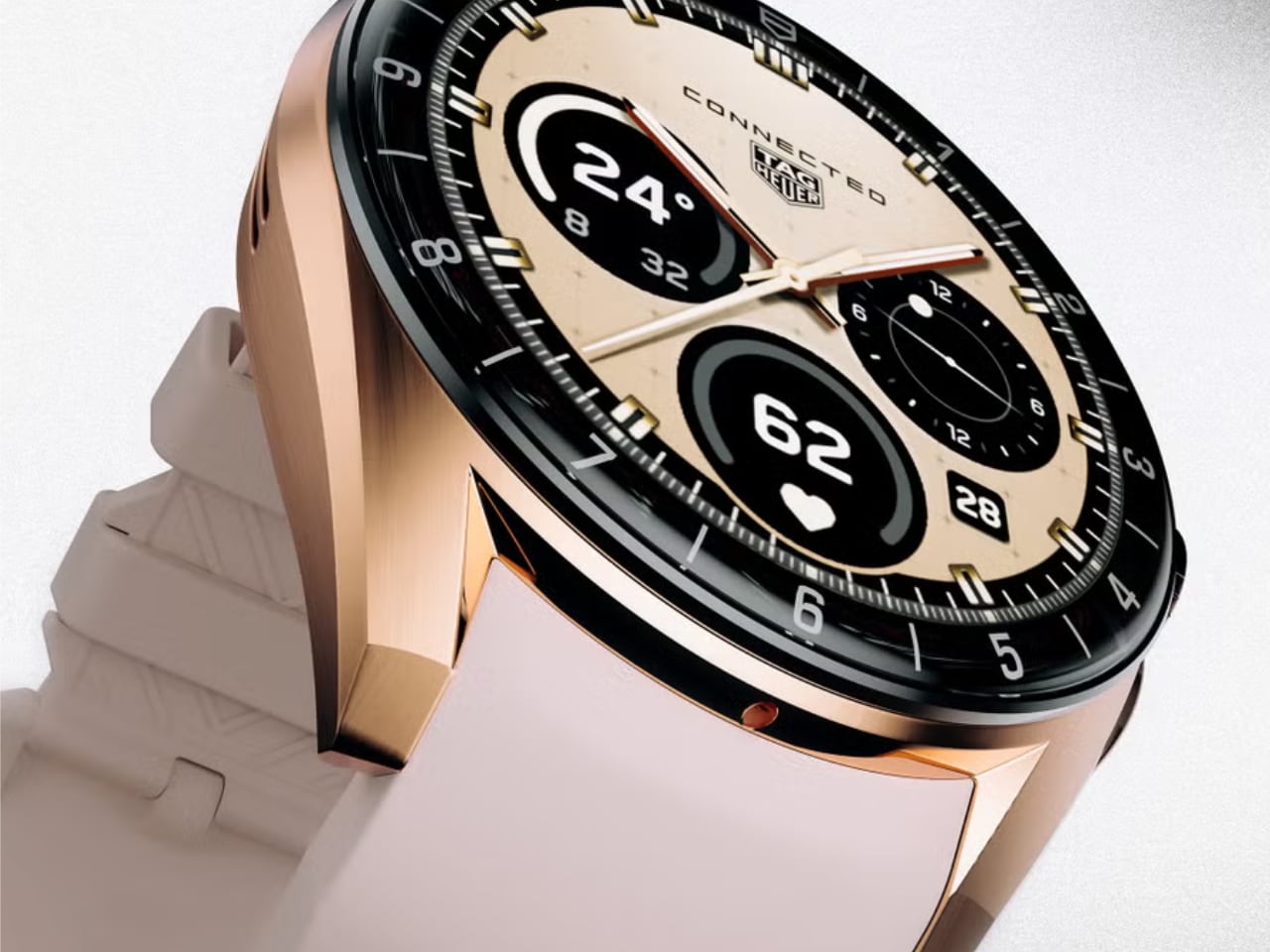
1. Horology-First Architecture: Steel and Titanium Over Aluminum
The E5 ships in 45mm or 40mm cases crafted from steel or titanium. This material selection matters beyond premium feel. Titanium’s 4.5g/cm³ density delivers durability without wrist fatigue during extended wear, while steel’s scratch resistance maintains appearance over years of daily use.
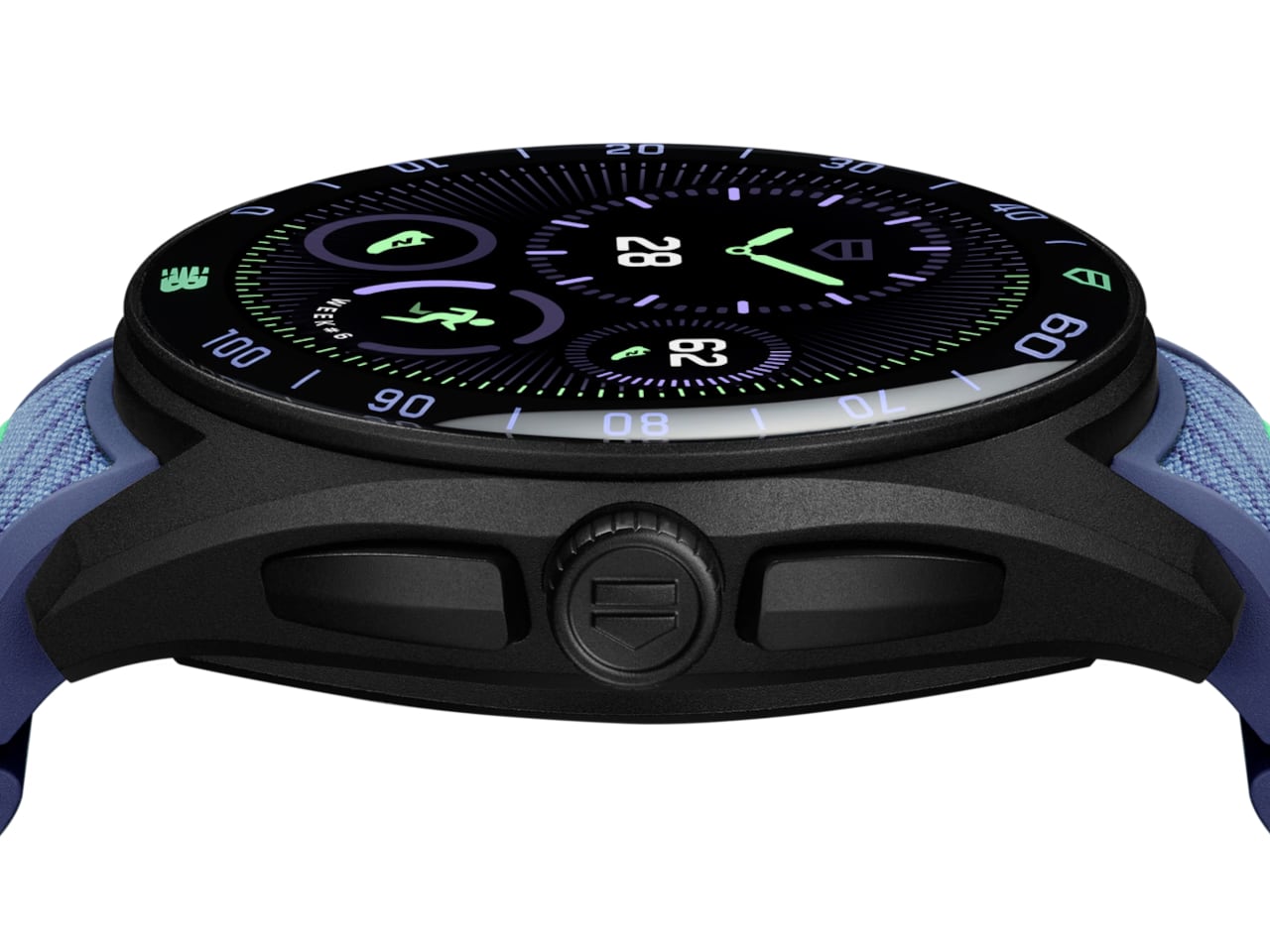
Compare this to the Apple Watch Series 11’s aluminum construction or the Samsung Galaxy Watch8’s lighter approach. TAG Heuer treats the smartwatch as a watch that happens to be smart, not a gadget wrapped in watch styling.
2. Proprietary TAG Heuer OS: Custom Software Development
TAG Heuer OS is completely proprietary software development, powered by Qualcomm’s Snapdragon Wear 5100+ chipset. The 60-person dedicated development team built a system that prioritizes watch interaction patterns over smartphone notification overload.
The redesigned operating system delivers quicker and cleaner navigation by rejecting Google Wear OS’s app-heavy architecture entirely. This mirrors what I observed testing the Huawei Watch Fit 4. Proprietary systems can optimize battery life and responsiveness when freed from universal platform constraints.
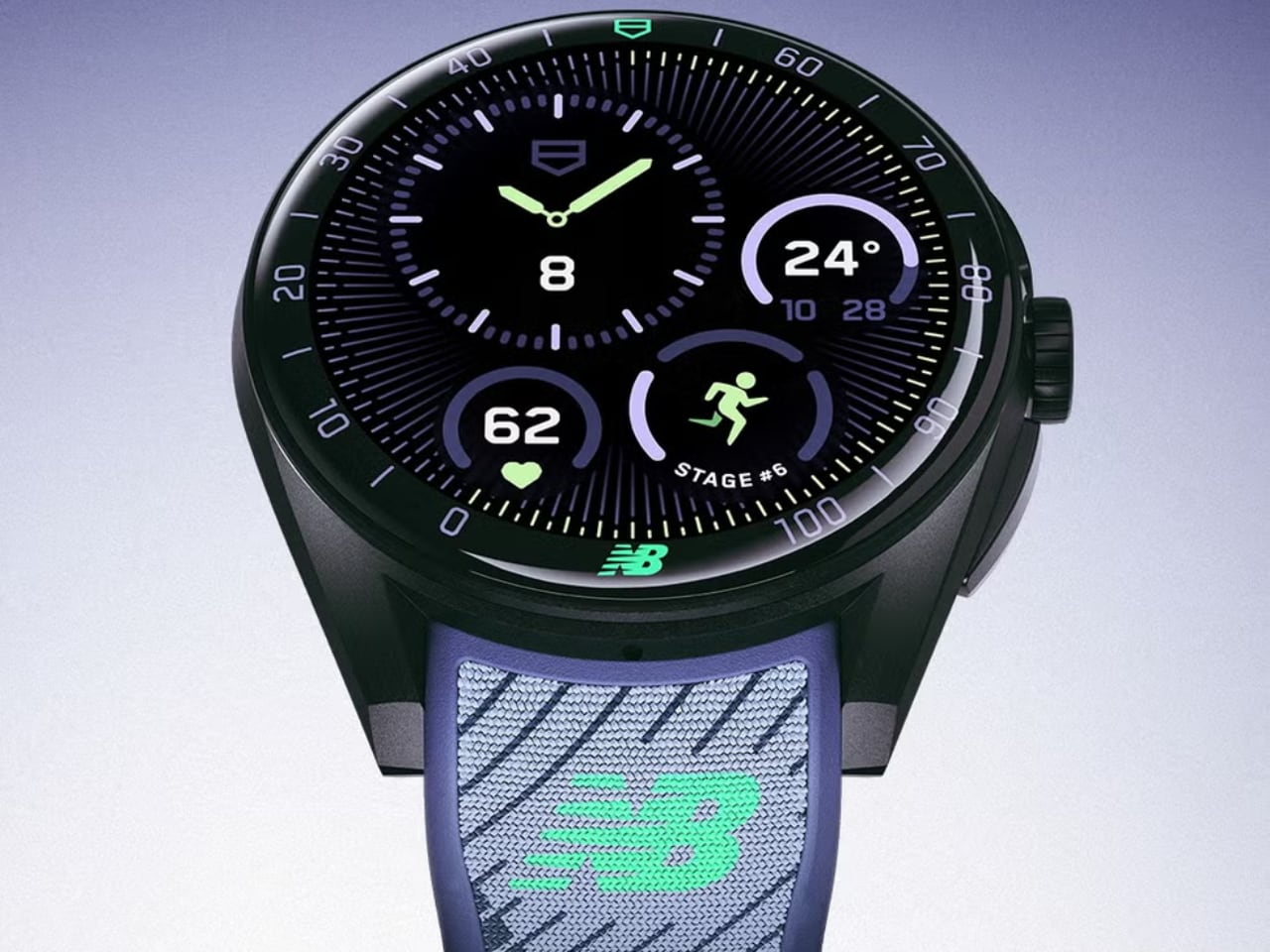
The E5’s up to three-day battery life confirms this engineering trade-off pays dividends. Fast charging delivers a full day of use in 30 minutes, with 100% charge in 90 minutes. This matters for travel or forgotten overnight charges.
The watch earned Made-for-iPhone certification, positioning it as premium iOS accessory rather than Android-first wearable. This strategic decision targets luxury consumers who overwhelmingly choose Apple’s ecosystem.
3. New Balance Collaboration: Materials Science Transfer
The New Balance edition demonstrates footwear-to-wearable materials transfer. The 40mm sandblasted black titanium case with violet and green accents references the FuelCell SC Elite v5 running shoe directly. The Cushion Comfort strap uses actual textile from the matching trainer, demonstrating engineering integration rather than simple brand licensing.
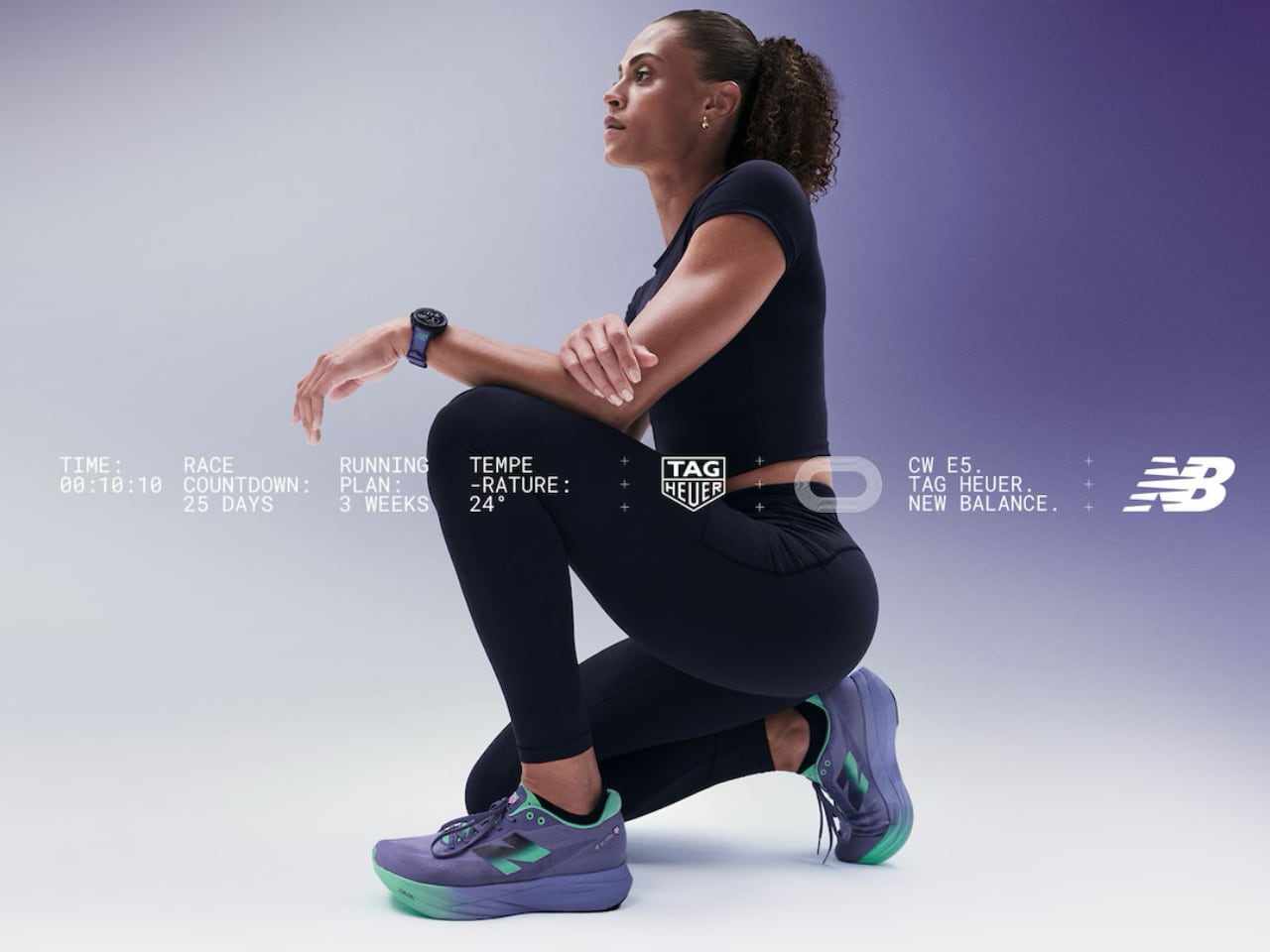
The materials transfer from footwear to wrist wear with purpose. An included stretch strap shows understanding of runner needs: regular strap for daily wear, stretch band for training sessions. Six guided running plans (10K through marathon) live on the watch, developed with New Balance’s performance team.
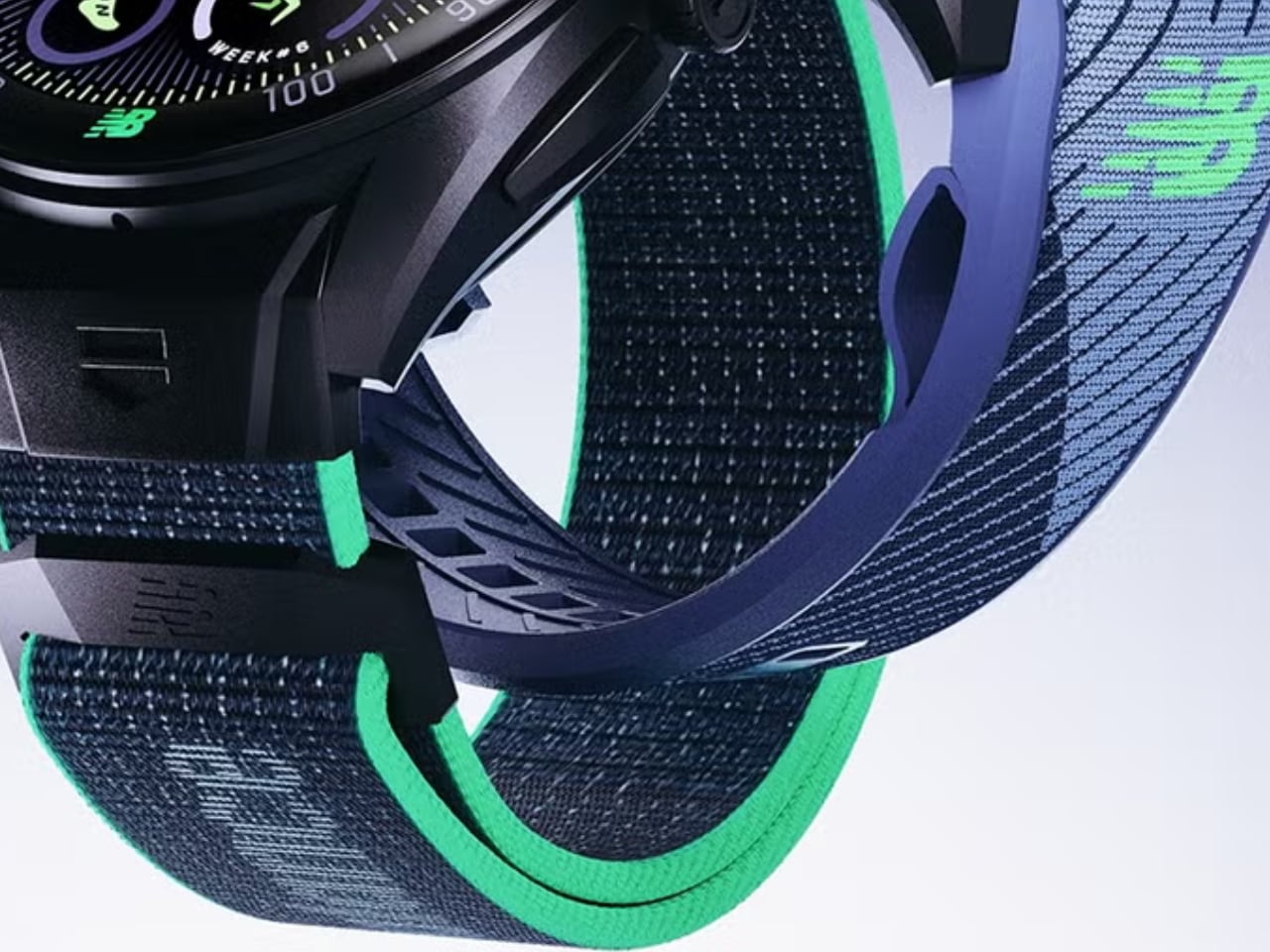
The collaboration signals luxury watchmaking’s evolution beyond heritage brand partnerships toward performance materials innovation.
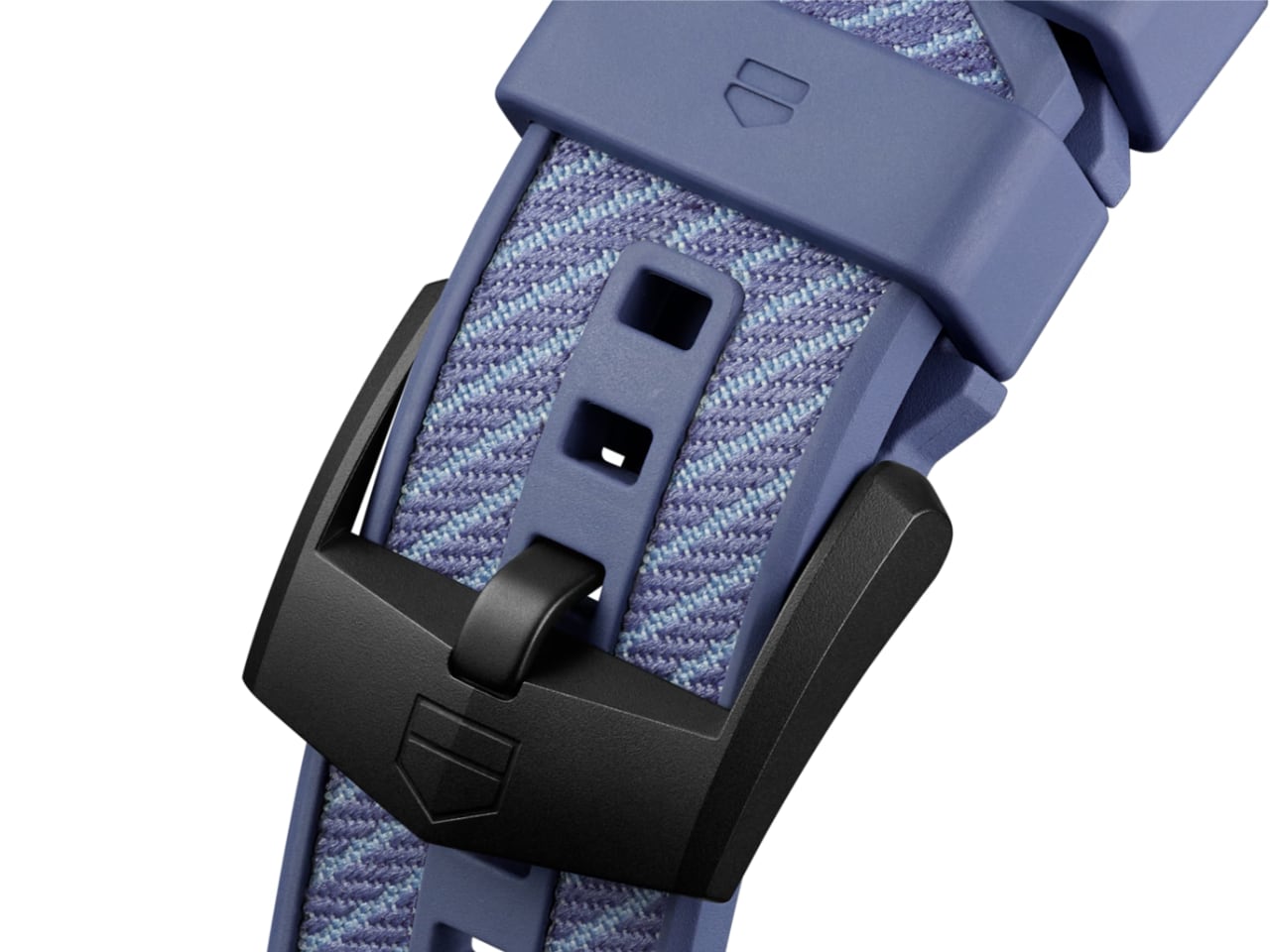
4. Dual-Band GPS: Technical Capability Enabling Design Confidence
Dual-band GPS integration allows TAG Heuer to position the E5 for standalone use without smartphone tethering. This technical capability unlocks design freedom. The watch doesn’t compromise aesthetics for connectivity requirements.
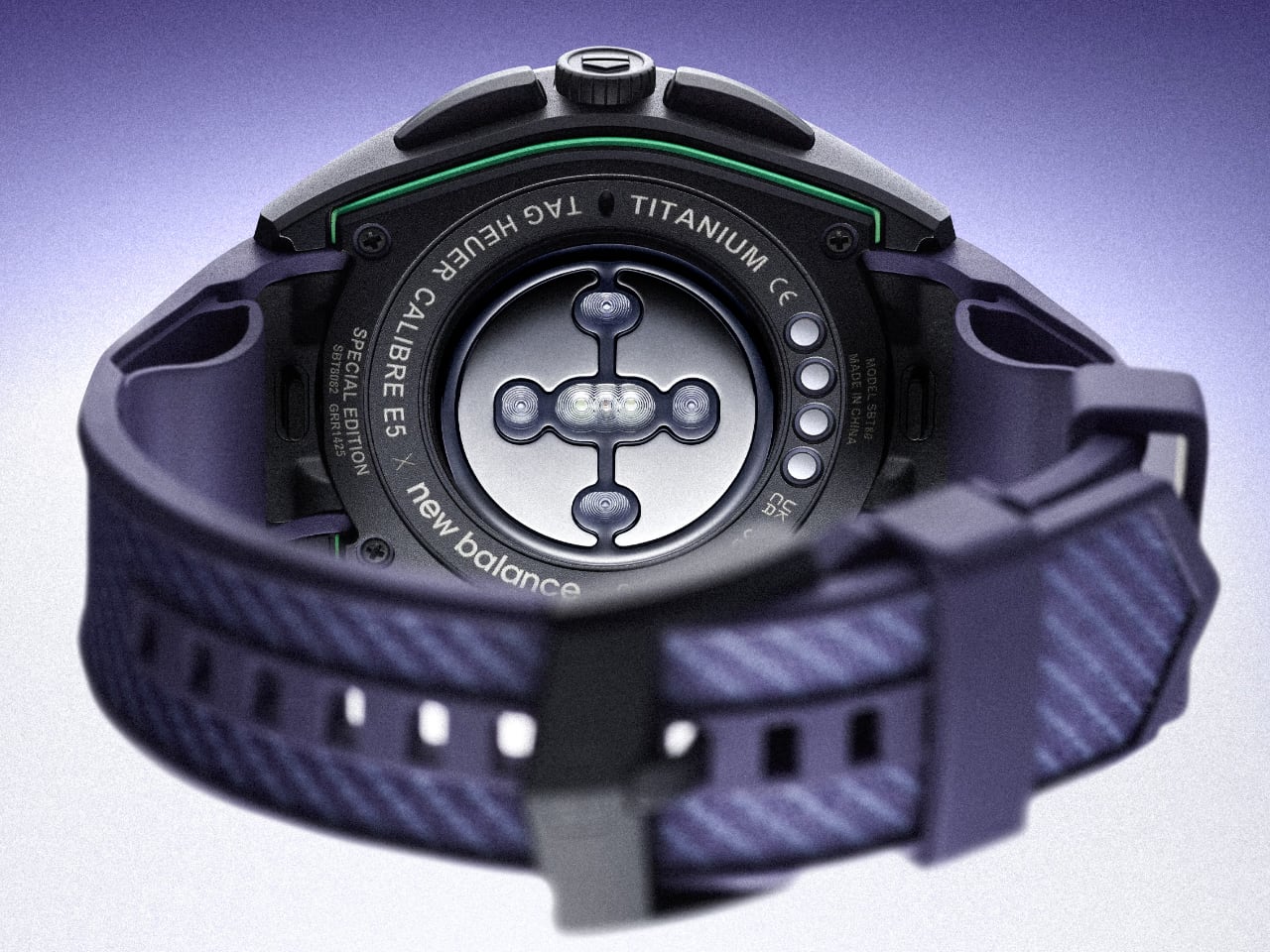
Having tested the Huawei Watch GT 6 Pro’s industry-first cycling power measurement, I recognize when technical capability enables design decisions. The E5 doesn’t need your phone because its GPS won’t lose you mid-run. The proprietary OS shift in 2025 reflects market timing: consumers now accept smartwatches as standalone devices rather than smartphone accessories.
While Garmin and COROS dominate multi-sport GPS tracking with longer battery life and deeper metrics, TAG Heuer positions the E5 differently. The focus stays on luxury design with capable GPS rather than comprehensive training analytics. This strategic choice targets runners seeking watch aesthetics with training intelligence, not athletes requiring ultramarathon battery endurance.
5. Proportional Sizing: 40mm and 45mm Address Real Wrists
TAG Heuer offers two case sizes to accommodate different wrist proportions. The New Balance edition’s 40mm specification particularly matters. Many performance-focused watches default to larger cases that overwhelm smaller wrists.

The Apple Watch SE 3 and Samsung Galaxy Watch8 similarly embrace multiple sizes, but TAG Heuer’s 40mm titanium option at $2,200 USD positions smaller as premium rather than entry-level. The sizing strategy acknowledges that luxury consumers expect choice, not one-size-fits-most compromises.
Design Philosophy: Ten Years of Strategic Evolution
The Connected Calibre E5 embodies TAG Heuer’s systematic smartwatch development:
2015: Original Connected (consumer electronics approach with Intel partnership)
2017: Modular (customizable components and straps)
2020: Carrera styling (watch heritage integration)
2022: E4 sizing improvements (40mm and 45mm options)
2025: E5 proprietary OS + New Balance collaboration = horology-first smartwatch
Each generation shed consumer electronics conventions while adding Swiss watch industry craft. The 2025 proprietary OS shift signals strategic inflection. TAG Heuer no longer compromises watch design for Google’s universal platform requirements.
At $1,700-$2,200 USD (CHF 1,500-1,950), the E5 competes with luxury mechanical watches, not fitness trackers. That pricing reflects materials, finishing, and software development that prioritizes timekeeping traditions over notification overload.
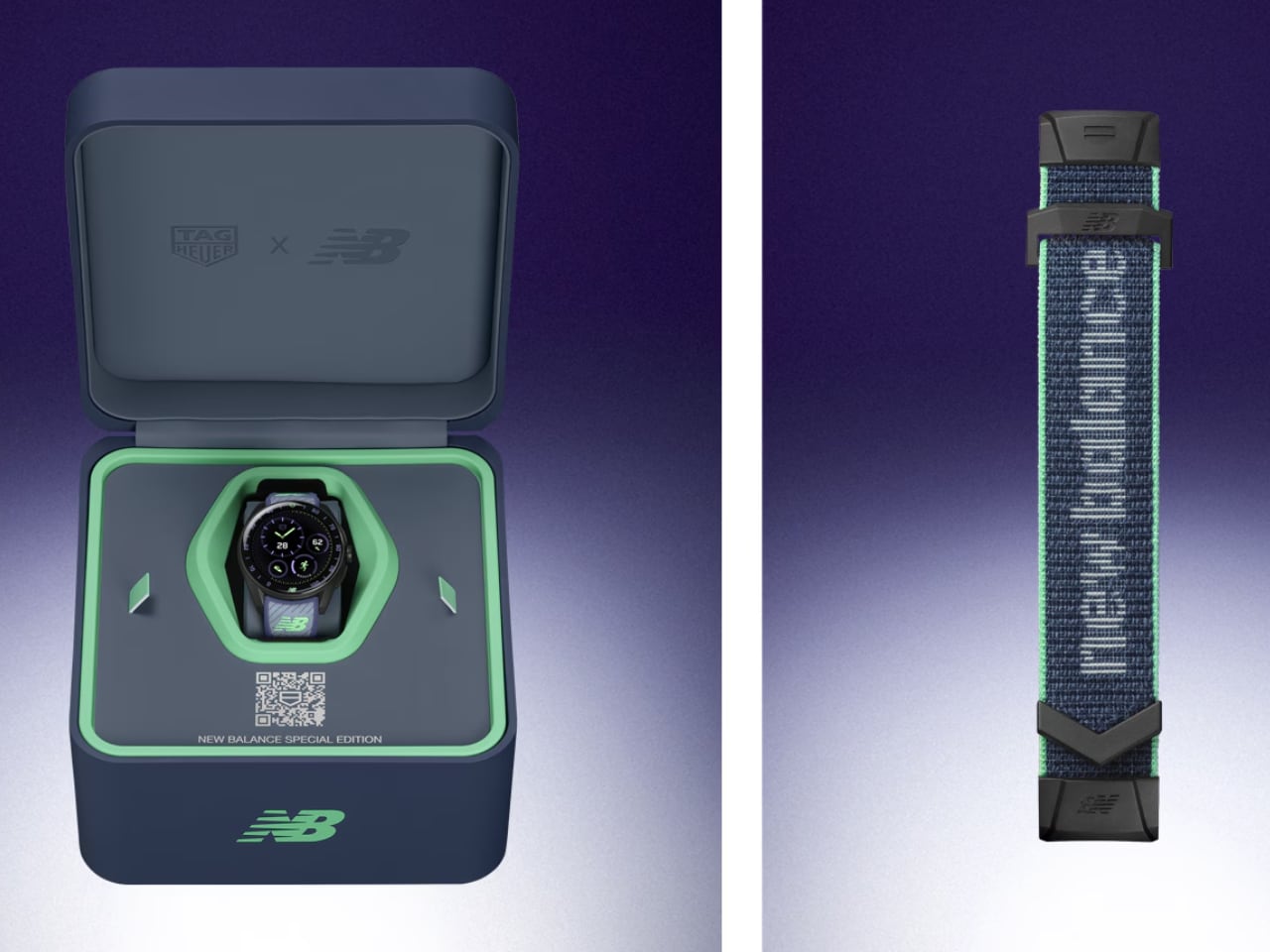
For runners seeking training intelligence in watch form, the New Balance edition delivers purpose-built design. For watch enthusiasts curious about smart complications, the standard E5 maintains TAG Heuer’s racing heritage while counting your steps.
